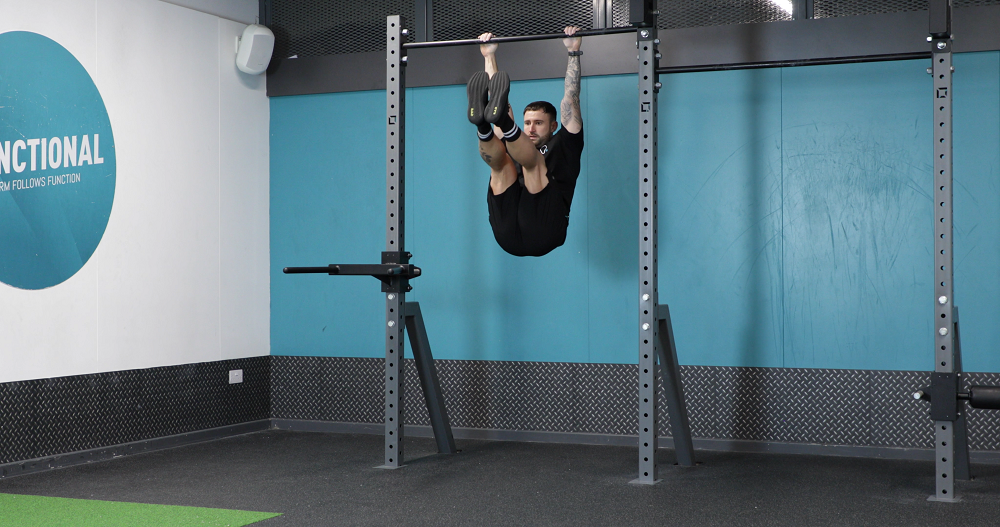Hanging Leg Raises
What Are Hanging Leg Raises?

Hanging leg raises are a core exercise that strengthens the hip flexors and abdominal muscles, especially the rectus abdominis and transverse abdominis. In addition to building core compression strength, this exercise improves grip strength, shoulder stability, and hamstring flexibility.
Hanging leg raises are a great place to start if you are working towards your L-sit. Aim to get your legs parallel with the floor while keeping them straight. If this is too challenging, you can perform hanging leg holds with your legs raised as high as you are able to as well as hanging knee raises. These use the same movement but with bent legs, working the same muscle groups in a slightly easier variation.
Hanging leg raises are an abs exercise and work well as part of a core workout, or in a fully-body calisthenics style training session.
Check out some other abs exercises: Hanging knee raises, supermans, v sit ups
Most Commonly Asked Questions About Hanging Leg Raises
There are four main muscles in your abdominals, and hanging leg raises predominantly target the rectus abdominis and transverse abdominis which pull the core inwards. Hanging leg raises also work the hip flexors which are an important part of the core, helping maintain good posture and reduce back pain.
Hanging knee raises are an alternative to hanging leg raises if this variation is too challenging. You can also perform lying leg raises to work the abs and hip flexors without a bar.
Hanging leg raises should be performed with minimal swinging in the upper body, to focus the work on the core. Prevent swinging by bracing your lats and tightening your core throughout the movement, and maintaining control so your legs don’t swing back behind the body.
Tips for Hanging Leg Raises
You can reduce swinging by bracing the lats and core throughout the movement. To brace the lats, pull your shoulder blades down around halfway while keeping your arms straight. Brace the core by tensing your abs and pulling them towards your pelvis.
Keep both legs straight and together, feet slightly pointed. Aim to bring them at least parallel to the floor.
Move with control throughout the whole movement, including the descent. Aim to pause at the top position and slowly lower your legs back down.
How To Do Hanging Leg Raises
Take hold of a pull up bar using a pronated (overhand) grip, with your hands shoulder width apart.
Allow your shoulder blades to drop, tuck your pelvis slightly up towards your bottom ribs, and brace your lats.
Breathe out and brace the core as you raise both legs up towards your chest.
Keep your legs straight and feet pointed, and pause when your legs are at a 90 degree angle to your torso.
Breathe in as you slowly lower your legs back down with control.
If you’re not sure if any of the above exercises are suitable for you, please consult your doctor before you start it. Need guidance on how to perform the exercise? Ask a personal trainer at your gym.